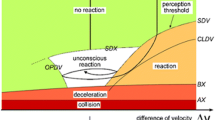Abstract
This research aims to optimize the traffic signal cycle and the green light time per traffic signal cycle at ramps and intersections in arterials to maximize the passing traffic volume and minimize the delaying traffic volume in freeway corridors. For this purpose, we developed the MATDYMO (multi-agent for traffic simulation with vehicle dynamics model) and validated it with comparison to commercial software, TRANSYT-7F, for an interrupted flow model and to URFSIM (urban freeway traffic simulation model) for an uninterrupted flow model. These comparisons showed that MATDYMO is able to estimate the traffic situation with only incoming traffic volume. Using MATDYMO, ramp metering and traffic signal control can be optimized simultaneously. We extracted 80 sampling points from the DOE (Design of Experiment) and derived each response from MATDYMO. Then, a neural network was adopted to approximate the objective function, and simulated annealing was used as an optimization method. There are three cases of the objective function: maximization of the freeway traffic volume, minimization of the delay of ramps and arterials, and the satisfaction of both cases. The optimization results showed that traffic flow in freeway corridors can be maintained to a steady stream by ramp metering and signal control.
Similar content being viewed by others
References
R. B. Chandra and S. Sivaramakrishnan, A multidimensional mixed ordered-response model for analyzing weekend activity participation, Transportation Research Part B: Methodological, 39, 255–278, (2005).
M. Papageoriou, An integrated Control Approach for Traffic Corridors, Transportation Research, 3, 19–30, (1995).
E. S. Park, J. H. Lim, I. H. Suh, Z. Bien, Hierarchical optimal control of urban traffic networks, International Journal of Control, 40, 813–829, (1984).
I. García-Fernández, J. D. Martín-Guerrero, M. Pla-Castells, E. Soria-Olivas, R. J. Martínez -Durá, J. Muñoz-Marí, Crane collision modeling using a neural network approach, Expert Systems with Applications, 27, 341–348, (2004).
S. L. Rosen and C. M. Harmonosky, An improved simulated annealing simulation optimization method for discrete parameter stochastic systems, Computers & Operations Research, 32, 343–358, (2005).
J. C. Helton and F. J. Davis, Latin hypercube sampling and the propagation of uncertainty in analyses of complex systems, Reliability Engineering & System Safety, 81, 23–69, (2003).
D. Chakraborty, Artificial neural network based delimitation prediction in laminated composites, Materials & Design, 26, 1–7, (2005).
P. I. Cowling and R. Keuthen, Embedded local search approaches for routing optimization, Computers & Operations Research, 32, 465–490, (2005).
D. S. Goodsell and A. J. Olson, Automated docking of substrates to proteins by simulated annealing, Proteins: Struct. Funct. Genet, 195–202, (1990).
Author information
Authors and Affiliations
Corresponding author
Additional information
This paper was recommended for publication in revised form by Associate Editor Kyongsu Yi
Myung-Won Suh is a professor of Mechanical Engineering. During 1986–1988, he worked in Ford motor company as researcher. During 1989–1995, he worked in technical center of KIA motors. He took a BS Degree in Mechanical Engineering from Seoul National University and an MS Degree in Mechanical Engineering from KAIST, South Korea. He obtained his Doctorate at University of Michigan, USA, in 1989. His research areas include the structure and system optimization, advanced safety vehicle and reliability analysis & optimization.
Chul-Ho Bae is a PhD candidate at Sungkyunkwan University in Suwon, South Korea. He accomplished fellowship work as researcher at Mississippi State University, USA, in 2003 and 2005. He worked in Institute of Advanced Machinery and Technology (IMAT) as a Research Assistant in 2004. He was a part time Lecturer in computer aided Mechanical Engineering of Ansan College of Technology, Suwon Science College, and Osan College during 2004–2005. He took a BS Degree in Mechanical Design and an MS Degree in Mechanical Engineering from the Sungkyunkwan University. His research interests include computer aided engineering, reliability engineering, and optimization.
Rights and permissions
About this article
Cite this article
Bae, CH., Cho, KY., Ji, SH. et al. Multi-agent based traffic simulation and integrated control of freeway corridors: Part 2 integrated control optimization. J Mech Sci Technol 23, 1374–1382 (2009). https://doi.org/10.1007/s12206-008-1108-z
Received:
Revised:
Accepted:
Published:
Issue Date:
DOI: https://doi.org/10.1007/s12206-008-1108-z




